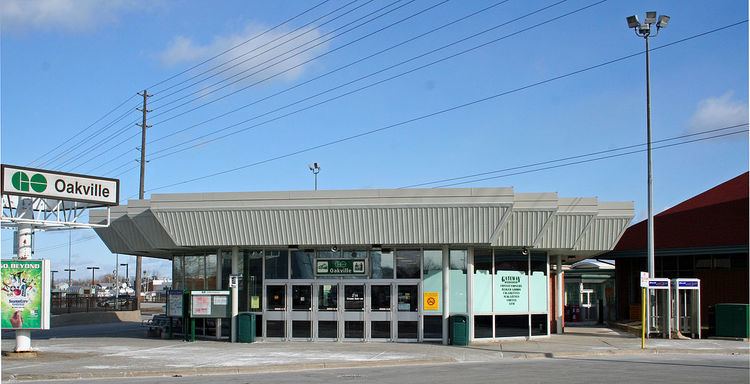Tracks 3 Disabled access Yes Phone +1 416-869-3200 Rebuilt 2012 | Bicycle facilities Rack Opened 23 May 1967 Platforms in use 1 | |
 | ||
Location 214 Cross AvenueOakville, OntarioCanada Parking 2,724 spaces + 2 electric vehicle parking/charging stations Similar Bronte GO Station, Clarkson GO Station, Aldershot GO Station, Port Credit GO Station, York University GO Station | ||
Railfanning at oakville go station
Oakville GO Station is a railway station and bus station in the GO Transit network located at 214 Cross Avenue in Oakville, Ontario, Canada, near the Trafalgar Road exit 118 of the Queen Elizabeth Way. It is colocated with Via Rail's Oakville railway station at 200 Cross Avenue.
Contents
It is a stop on GO's Lakeshore West line train service and, until October 2007, served as the western terminus for weekend service. On weekdays, one branch of the Highway 407 GO bus service, that connects with Sheridan College, Square One Bus Terminal, Bramalea GO Station, and York University terminates at this station, as does the Highway 403 peak-hour service, that also serves Square One, then follows Highway 401 to Yorkdale Bus Terminal, and Yonge Street to the Finch Bus Terminal. Apart from Union Station, Oakville is the busiest station in GO Transit's network by passenger volume.
Via trains from Windsor-Quebec corridor intercity routes stop here, as does the joint Amtrak-Via Maple Leaf service between New York City and Toronto.
History
The Grand Trunk Railway was important to the development of Oakville because it was the major transportation link for goods and people to Toronto or Hamilton, and beyond. The original Great Western Railway station was built here in 1856, on the same site as the current VIA and GO Stations. The Great Western Railway was purchased in 1882 by the Grand Trunk Railway, which was absorbed into the Canadian National Railway in 1920.
Between 2009 and 2012, improvements on the Lakeshore West line added a third mainline track requiring the demolition of the Via Rail station and the construction a new fully accessible building. Vehicular access was improved and a covered drop off and pick up area was created with more than 1,000 new parking spaces added in a new six-storey parking structure. The bus shelters were replaced with heated shelters in the spring of 2015.
